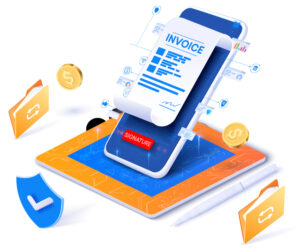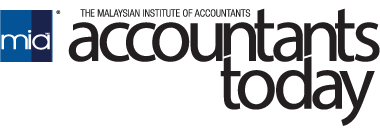MIA Sustainability, Digital Economy and Reporting Team
In a bid to streamline tax administration and boost efficiency in handling a growing volume of transactions, Malaysia has embarked on a transformative journey towards e-invoicing. This pivotal move was the focus of a recent webinar moderated by Amarjeet Singh, Managing Partner of ASEAN Tax Ernst & Young Tax Consultants Sdn Bhd and featuring distinguished panellists Dr. Rasyidah Che Rosli, Director of Operations Policy Section, Tax Operations Department of the Inland Revenue Board of Malaysia (IRBM) and Surin Segar, Senior Executive Vice President of Maybank.
Here are the key takeaways from this enlightening presentation and discussion.
Overview of E-Invoicing in Malaysia
Malaysia’s e-invoicing paradigm can be traced back to the pre-budget statement in June 2022, signalling the government’s commitment to enhancing tax administration through digitalisation. The Twelfth Malaysia Plan underscored the importance of digital infrastructure and digitalising tax administration, laying the groundwork for this progressive initiative.
Subsequently, e-invoicing guidelines were unveiled in 2023, offering clarity and guidance on implementation. Noteworthy mentions include the Budget 2023’s announcement of gradual e-invoicing implementation, commencing in 2023, and the emphasis on system development and pilot projects. E-invoicing promises manifold benefits for businesses, fostering streamlined processes as well as enhancing accuracy, efficiency, and financial management.
E-Invoice Model and Implementation
E-invoicing ushers in a digital representation of transactions between suppliers and buyers, superseding traditional documentation. Implementation will unfold in phases, cognizant of turnover or revenue thresholds to facilitate seamless adaptation by businesses. Engagement with pilot companies started in Q4 2023 in preparation for the testing environment scheduled for Q1 2024. Mandatory implementation kicked off in August 2024 for taxpayers with annual turnover exceeding RM100 million, and will be extended to all taxpayers by July 2025¹. Taxpayers are able to opt for voluntary participation earlier, underpinning the government’s commitment to fostering a conducive environment for digital transformation.
E-Invoice Transmission Mechanisms
Two robust mechanisms for transmitting e-invoices to IRBM were explained: the MyInvois portal and Application Programming Interface (API). The MyInvois Portal, hosted by the IRBM, serves as a user-friendly platform enabling taxpayers to generate, submit, view, cancel, or reject e-invoices. Conversely, API facilitates direct submission of e-invoices to the IRBM, albeit necessitating technology investments and adjustments.
E-Invoice Workflow
The intricate e-invoice workflow compresses the journey from sales to e-invoice issuance by suppliers and subsequent storage in the IRBM’s database². Notably, two submission options are available to taxpayers: the MyInvois Portal or API³. Validated e-invoices trigger notifications to both suppliers and buyers, accompanied by provisions for cancellation or rejection within a 72-hour window.
Data Protection and Security
Since data protection and security are paramount, the IRBM underscores its commitment to fortifying network security and monitoring data security and privacy to safeguard e-invoice data. A suite of measures including continuous monitoring, auditing, and policy enhancements have been instituted to address data protection imperatives.
Transition Journey and Recommendations

Navigating the e-invoicing landscape calls for a strategic approach encompassing three pivotal stages: planning, implementation, and operations. Taxpayers are enjoined to conduct comprehensive assessments of turnover thresholds, integrate guidelines (e-Invoice guideline & e-Invoice specific guideline), engage stakeholders, and allocate resources judiciously. The onus rests on continuous monitoring, updating, and maintenance of e-invoice systems to ensure compliance and seamless operations.
Key Questions and Answers
The webinar provided a platform for addressing pertinent queries, spanning sales cutoff issues, implementation challenges, organisational leadership, support from tax authorities, and data security assurances. Here are the key questions and answers:
Q: What are the key considerations regarding sales cutoff issues related to e-invoicing?
A: The validation process for e-invoices is in real-time, and sales should be recognised based on the validation date by the IRBM, not necessarily the issuance date.
Q: Is it permissible to deliver goods to local customers before invoices are validated, and how should sales be recognised?
A: Delivery of goods follows the usual business process, regardless of e-invoice validation. Sales recognition should be aligned with the accounting standards or the validated date.
Q: Who should take the lead in e-invoicing implementation within an organisation?
A: The ownership of e-invoicing implementation may vary depending on the organisation, but finance, tax, or compliance departments are likely candidates. Tax functions in organisations play a significant role due to reconciliation requirements.
Q: What are the key considerations for organisations in evaluating e-invoicing options?
A: Some key considerations include security, cost, speed of transmission, and integration with existing systems. Organisations should prioritise security measures while also assessing the financial implications and transmission efficiency of each option.
Q: Will there be charges for using the MyInvois portal for e-invoicing?
A: No, there are no charges imposed by the IRB for using the MyInvois portal. Taxpayers have the options to choose between the MyInvois portal and API based on their business requirements.
Q: How will data security and privacy be ensured in e-invoicing transactions?
A: The MyInvois system ensures data security by complying with Information & Communication Technology security policies and implementing industry-standard cybersecurity measures such as encryption, authentication, access control, and firewalls to protect against unauthorised access or modification.
Q: Will e-invoicing simplify tax compliance reporting in the future?
A: Yes, e-invoicing implementation aims to simplify tax compliance reporting by enhancing the efficiency of tax administration, reducing lead times for tax audit processes, and facilitating seamless integration for tax return filing.
Conclusion and Further Resources
In conclusion, the webinar offered valuable insights on Malaysia’s e-invoicing trajectory, enlightening stakeholders on the benefits, implementation roadmap, transmission mechanisms, data protection imperatives, transition necessities, and available resources. Taxpayers are encouraged to stay abreast with updates via the e-invoice microsite and to leverage available channels for clarification.
¹ https://www.hasil.gov.my/en/e-invoice/e-invoice-implementation-timeline/
² https://sdk.myinvois.hasil.gov.my/start/#system-overview
³ https://sdk.myinvois.hasil.gov.my/start/#integration-approach







